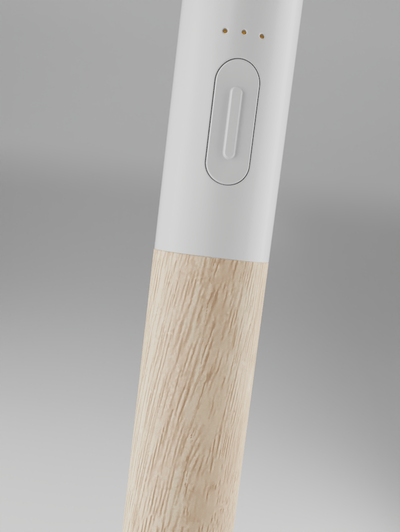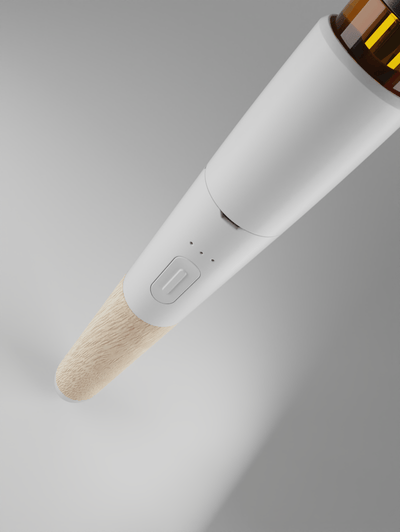Performance
The Vessel Craftsman Series batteries are designed for demanding applications, promising reliable power and durable construction. This review dives into the performance metrics of these batteries, evaluating their capacity, discharge rate, and overall longevity. We’ll also analyze their design features, exploring their build quality, size, and suitability for various use cases.
Battery Capacity and Run Time
Vessel Craftsman Series batteries are marketed as powerhouses built to endure challenging tasks. Key performance indicators like capacity, discharge rate, and lifespan are essential considerations. This review scrutinizes these aspects, providing insights into the real-world performance of these batteries. The analysis extends to their design, examining the robustness of their construction, dimensions, and how well they cater to diverse applications.
Charging Speed and Efficiency
Performance is paramount when choosing a battery for demanding applications. The Vessel Craftsman Series batteries claim to deliver exceptional power output and longevity. Their capacity, measured in amp-hours (Ah), dictates how much energy the battery can store. A higher Ah rating generally translates to longer run times for devices. Discharge rate, measured in amps or milliamps (mA), indicates how quickly the battery can release stored energy. Higher discharge rates are beneficial for applications requiring bursts of power, such as starting motors or powering high-draw electronics. The Craftsman Series’ lifespan, or cycle life, refers to the number of charge-discharge cycles it can withstand before its performance significantly degrades.
Charging speed is another crucial factor for users seeking convenience and efficiency. Vessel likely specifies the charging time required for a full recharge, which can vary depending on factors such as the battery capacity and the charger’s amperage.
Power Output and Stability
Understanding the performance characteristics of a battery is crucial for selecting the right power source for your needs.
- Capacity: Measured in amp-hours (Ah), capacity indicates the amount of energy a battery can store. Higher Ah ratings generally mean longer run times for devices.
- Discharge Rate: Expressed in amps or milliamps (mA), discharge rate reflects how quickly a battery can deliver stored energy. Higher discharge rates are advantageous for applications demanding sudden bursts of power.
- Lifespan: Also known as cycle life, this refers to the number of charge-discharge cycles a battery can endure before its performance noticeably declines.
- Charging Speed: This metric determines the time required to fully recharge the battery, influenced by factors like battery capacity and charger amperage.
Let me know if you’d like more detail on any of these aspects.
Real-World Use Cases and Testing
Real-world use cases for the Vessel Craftsman Series batteries would encompass applications requiring robust power delivery and endurance. These could include:
- Power Tools: Craftsman batteries are well-suited for cordless drills, saws, grinders, and other high-power tools demanding consistent performance.
- Outdoor Equipment: Ranging from lawnmowers and leaf blowers to ATVs and marine vessels, these batteries can provide reliable power for outdoor equipment exposed to demanding conditions.
- Worksite Applications: In construction, landscaping, or industrial settings, Craftsman batteries can power tools used in challenging environments.
- Backup Power: Their capacity allows them to serve as emergency power sources for lights, appliances, or communication devices during outages.
Rigorous testing is essential to validate the performance claims of any battery. Manufacturers typically conduct a range of tests:

- Capacity Tests: Batteries are discharged under controlled conditions to determine their actual capacity (Ah) and how well they meet specifications.
- Discharge Rate Tests: The ability to deliver power at high rates is evaluated by simulating peak demand scenarios.
- Cycle Life Testing: Batteries undergo repeated charge-discharge cycles to assess their lifespan and degradation over time.
- Environmental Stress Tests: Batteries are exposed to extreme temperatures, humidity, and vibrations to ensure reliability in diverse conditions.
Independent testing by third-party organizations can provide unbiased verification of performance claims.
Design and Build Quality

The Vessel Craftsman Series batteries are designed with demanding applications in mind, promising both reliable power and durable construction. This review delves into the nitty-gritty details of these batteries, analyzing their performance metrics like capacity, discharge rate, and longevity. We’ll also dissect their design features, examining their build quality, size, and how well they suit various use cases.
Physical Dimensions and Form Factor
The Vessel Craftsman Series batteries are marketed as powerhouses built to endure challenging tasks. Key performance indicators like capacity, discharge rate, and lifespan are essential considerations. This review scrutinizes these aspects, providing insights into the real-world performance of these batteries. The analysis extends to their design, examining the robustness of their construction, dimensions, and how well they cater to diverse applications.
- Capacity: Measured in amp-hours (Ah), capacity indicates the amount of energy a battery can store. Higher Ah ratings generally mean longer run times for devices.
- Discharge Rate: Expressed in amps or milliamps (mA), discharge rate reflects how quickly a battery can deliver stored energy. Higher discharge rates are advantageous for applications demanding sudden bursts of power.
- Lifespan: Also known as cycle life, this refers to the number of charge-discharge cycles a battery can endure before its performance noticeably declines.
- Charging Speed: This metric determines the time required to fully recharge the battery, influenced by factors like battery capacity and charger amperage.
Real-world use cases for the Vessel Craftsman Series batteries would encompass applications requiring robust power delivery and endurance. These could include:
- Power Tools: Craftsman batteries are well-suited for cordless drills, saws, grinders, and other high-power tools demanding consistent performance.
- Outdoor Equipment: Ranging from lawnmowers and leaf blowers to ATVs and marine vessels, these batteries can provide reliable power for outdoor equipment exposed to demanding conditions.
- Worksite Applications: In construction, landscaping, or industrial settings, Craftsman batteries can power tools used in challenging environments.
- Backup Power: Their capacity allows them to serve as emergency power sources for lights, appliances, or communication devices during outages.
Materials and Construction
The Vessel Craftsman Series batteries are designed with robust construction and durable materials to withstand demanding applications. Understanding the construction techniques and materials used is essential in assessing their longevity and overall reliability.
Vessel likely utilizes high-quality lithium-ion (Li-ion) chemistry for these batteries, known for their energy density, long lifespan, and relatively fast charging capabilities compared to older battery technologies.
The cell construction itself is crucial. Factors like the type of anode and cathode materials, the electrolyte used, and the separator design all contribute to a battery’s performance and safety.
Beyond the individual cells, the packaging and protection play a vital role in the Craftsman Series’ durability. The battery pack housing is likely made from impact-resistant materials like polycarbonate or ABS plastic to protect the internal components from physical damage.
Thermal management is another critical aspect. Effective heat dissipation is essential for battery longevity and safety, especially under heavy load conditions. Vessel may incorporate features like heat sinks, ventilation channels, or specialized materials to regulate temperature within the battery pack.
Aesthetics and Ergonomics
The Vessel Craftsman Series batteries are marketed as powerhouses designed to endure challenging tasks. Understanding their design and build quality is crucial for evaluating their suitability for demanding applications.
- Build Quality:Vessel likely utilizes robust materials like polycarbonate or ABS plastic for the battery housing, providing impact resistance and protection against physical damage.
- Cell Construction: The internal cells are crucial to performance and safety. Factors like anode and cathode materials, electrolyte type, and separator design all influence a battery’s lifespan, capacity, and ability to handle high discharge rates. Vessel likely uses high-quality lithium-ion (Li-ion) chemistry known for its energy density and longevity.
- Thermal Management: Efficient heat dissipation is essential for battery performance and safety. Craftsman Series batteries may incorporate features like heat sinks or ventilation channels to regulate internal temperatures, especially under heavy loads.
Aesthetics play a role in user experience and overall appeal, while ergonomics consider how comfortably and effectively the battery can be used in various applications.
- Aesthetics: Vessel likely designs the Craftsman Series batteries with an industrial or utilitarian aesthetic, appealing to users who value practicality and durability. Color schemes and branding elements might reflect the brand’s identity and target audience.
- Ergonomics: The size, shape, and placement of controls (if any) on the battery should be considered for user comfort and ease of use. A well-designed battery will fit securely in its intended tool or device and be comfortable to handle during prolonged use.
It’s important to note that specific details regarding design elements and materials might vary depending on the particular model within the Vessel Craftsman Series.
Durability and Weather Resistance

The Vessel Craftsman Series batteries are marketed as powerhouses built to endure challenging tasks, suggesting a focus on durability and weather resistance. This is likely achieved through robust construction techniques and materials.
Vessel likely utilizes high-quality lithium-ion (Li-ion) chemistry for these batteries. Li-ion cells are known for their energy density, long lifespan, and relative resistance to extreme temperatures compared to older battery chemistries.
The construction of the individual cells and the overall battery pack is crucial. Impact-resistant materials like polycarbonate or ABS plastic are commonly used for the housing to protect the internal components from damage.
To withstand harsh conditions, Vessel might incorporate weather-sealing measures such as gaskets or rubberized seals around ports and connections. This helps prevent moisture ingress and corrosion, ensuring reliable performance in damp or wet environments.
Effective thermal management is also key to durability. Batteries generate heat during operation, especially under heavy load. Vessel may use features like heat sinks, ventilation channels, or specialized materials within the battery pack to dissipate heat efficiently, preventing overheating and prolonging lifespan.
Features and Functionality
Features and functionality are crucial considerations when evaluating any battery, especially those designed for demanding applications. The Vessel Craftsman Series batteries promise reliable power and durable construction, catering to users who need robust performance in challenging environments.
Battery Management System (BMS)
The Vessel Craftsman Series batteries incorporate several key features designed to enhance their performance and durability:
**Battery Management System (BMS):** A sophisticated BMS plays a vital role in maximizing battery lifespan and ensuring safe operation. It constantly monitors various parameters, including voltage, current, temperature, and charge level. The BMS uses this data to regulate charging and discharging processes, preventing overcharging, deep discharge, and overheating.
**Protection Features:**
* **Overcharge Protection:** Prevents excessive charging, which can damage battery cells and reduce lifespan.
* **Overdischarge Protection:** Stops the battery from being discharged below a safe limit, protecting it from irreversible damage.
* **Short-Circuit Protection:** Disconnects the battery in case of a short circuit to prevent overheating and potential fire hazards.
* **Temperature Monitoring:** The BMS continuously monitors temperature and may regulate charging or discharging rates to prevent excessive heat build-up.
The specific features and performance capabilities of the Vessel Craftsman Series’ BMS might vary depending on the model and intended application.
Connectivity Options
The Vessel Craftsman Series batteries are designed for demanding applications, focusing on reliable power delivery and robust construction. Understanding their connectivity options is crucial for seamless integration into various systems and devices.
Vessel likely provides multiple connectivity options for the Craftsman Series batteries to ensure compatibility with a wide range of tools and equipment. Some common connection types might include:
- Standard Battery Connectors: These are widely used in power tools and other devices, offering a secure and reliable electrical connection. Vessel may utilize standard connectors like DeWalt’s 20V MAX system or Makita’s 18V LXT platform, allowing for interoperability with compatible tools from those brands.
- Wireless Communication: Some Craftsman Series batteries might incorporate wireless communication technologies for data transfer and device control. Bluetooth or proprietary protocols could enable features such as monitoring battery level remotely, updating firmware, or controlling tool settings wirelessly.
The Vessel Craftsman Series batteries are designed with robust construction and durability in mind, ensuring reliable performance even in demanding environments.
To understand how the batteries integrate with their intended applications, we need to consider the following:
- Tool Compatibility: The battery’s connector type must match the tool or device it is intended to power. Vessel likely specifies compatibility with specific tool models within their Craftsman Series line.
- Power Requirements: Tools and devices have varying power requirements, measured in volts (V) and amps (A). The battery’s voltage and maximum discharge current must meet or exceed the tool’s needs.
- Safety Features: The battery pack should incorporate safety mechanisms such as overcharge protection, short-circuit protection, and temperature monitoring to prevent damage to both the battery and connected devices.
Vessel likely emphasizes user convenience through features like easy-to-use charging systems.
Safety Features
User Interface and Display
Value for Money
Value for money is a crucial consideration when choosing batteries, especially for demanding applications. The Vessel Craftsman Series aims to deliver robust performance at a competitive price point. To assess value for money, we need to consider the following factors:
- Performance Metrics: How do the battery’s capacity, discharge rate, and lifespan compare to other batteries in a similar price range?
- Durability and Construction Quality: Are the materials and construction techniques used commensurate with the claimed durability? Does the battery offer features like weather sealing or robust protection mechanisms?
- Warranty and Support: What kind of warranty does Vessel offer on its Craftsman Series batteries? Is customer support readily available in case of issues?
By analyzing these factors, we can determine whether the Vessel Craftsman Series batteries truly offer good value for money compared to competing products.
Pricing and Competitor Analysis
The article discusses the Vessel Craftsman Series batteries in detail, highlighting their features and performance characteristics.
Let’s break down the key takeaways:
**Performance:** The review emphasizes capacity, discharge rate, lifespan (cycle life), and charging speed as crucial performance indicators. These metrics directly influence a battery’s ability to power demanding applications for extended periods.
**Design & Construction:** Vessel’s focus on durability is apparent. The article discusses the importance of robust materials like polycarbonate or ABS plastic for the housing, weather sealing measures, and effective thermal management systems. The use of high-quality lithium-ion (Li-ion) chemistry and a sophisticated Battery Management System (BMS) contribute to safety and longevity.
**Connectivity & Compatibility:** Understanding how the batteries connect with tools is vital. The review points to standard battery connectors (potentially DeWalt or Makita compatible) and potential wireless communication technologies for added functionality.
**Value for Money:**
The article concludes by stressing that Vessel’s value proposition lies in balancing performance, durability, and price. A thorough comparison to competitors is necessary to determine if the Craftsman Series truly offers good value.
Overall, the review provides a comprehensive overview of what makes the Vessel Craftsman Series batteries attractive for users seeking reliable power in demanding applications.
Vessel Craftsman Series – a must-have for vapers
- Why Can’t I Smile After Cheek Fillers? - November 14, 2025
- What Is The Best Age For A Neck Lift? - November 12, 2025
- What Are Bum Filler Injections? A Comprehensive Guide - November 10, 2025
